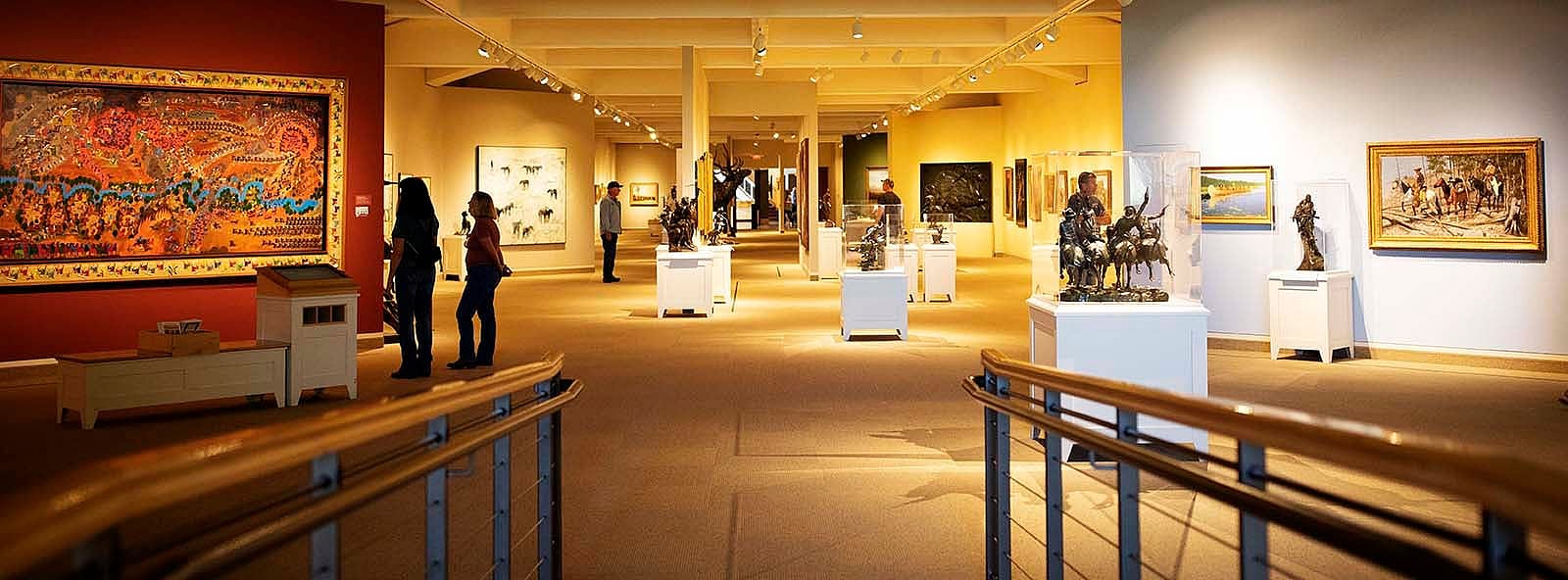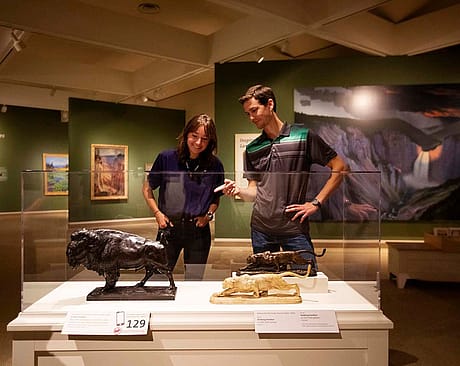Whitney Western Art Museum

Whitney Western Art Museum
The Whitney Western Art Museum was dedicated in 1959 and named for artist and patron Gertrude Vanderbilt Whitney.
The Whitney’s collection presents masterworks of western American art dating from the early nineteenth century to today, highlighting wildlife, landscapes, peoples, and events.
How is the art presented?
More than three hundred paintings and sculptures are on view in the Whitney Western Art Museum and the Grainger Gallery. Additional works of art can be found throughout the museum and gardens, and others are temporarily stored.
Artworks are generally arranged by their date of creation, but in some areas, artworks old and new are grouped around a theme, encouraging visitors to make connections across cultures and time. Our inventive installations encourage discovery, challenge perceptions, and allow for contemplation.
How is the art interpreted?
Labels and interactives provide facts, perspectives, and opinions. Curators, scholars, and educators wrote most of our text. When possible, quotes from artists and members of the public are included.
Activities in the gallery complement tranquil spaces ensuring that visitors of all ages and interests leave inspired. With an extensive exhibition schedule and gallery displays changing frequently, there is always something new to see and learn at the Whitney.
Stories and Storytellers
Each painting and sculpture on view shares a story about the American West from a unique perspective. Artists are the storytellers, and their backgrounds, lived experiences, and prevailing cultural attitudes shaped their work. Sometimes, patrons influenced their creative choices.
Though women artists are represented in the gallery, most artwork on view was created by men. And while some work of Native artists and artists of color is exhibited, most was created by artists of European descent.
The museum staff is actively working to broaden the range of stories and points of view in the Whitney.
Fact and Fiction
Many paintings and sculptures in the Whitney depict historical peoples and events with varying degrees of fact and fiction. Some artists tried to create an accurate record of a time or place in the West, based on their views and experiences. Others consciously dramatized or invented their subjects, sometimes to appeal to viewers’ and buyers’ expectations and emotions.
Over the years, the blending of reality and myth in art has informed many popular perceptions of the West.
Difficult Subjects
Some historical works of art in the Whitney feature subjects that may challenge personal opinions and beliefs. For example, art celebrating the settlement of the West in the nineteenth century can downplay or disregard the negative effects of U.S. westward expansion on the environment and Indigenous peoples.
The museum staff seeks to acknowledge and address difficult subjects more clearly. If you have suggestions or ideas to share, contact us at [email protected].


